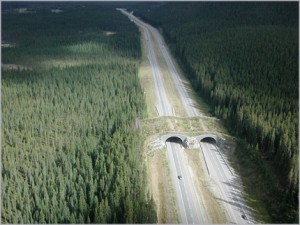Check out the two links above. The first stresses the need for cities to grow upwards rather than out; the second provides a neat article about urban farming. While these links do not talk in depth about transportation and urban roads, implementing the changes put forth would have drastic effects. The need for roads would be greatly reduced without the need to ship food into cities and commuters would not need roads in order to get to work if they lived an worked in the same building.
Author Archives: Will
HIV Spread along Mombasa Road, Kenya
HIVAIDS part 3 – Mombasa Road, Kenya (The spread of HIV) – YouTube
This video created by the Salvation Army highlights the spread of HIV in Africa along roads. Truck drivers are interviewed in regard to their role as a transportation vector for the disease. Interviewees recognized the dangers presented by the disease but showed little to indicate a change in behavior. HIV will continue to spread along roads as long as people’s behaviors and awareness do not change because roads allow for more people to come in contact with the disease and allows HIV to spread over vast distances rapidly.
Podcast: Play in new window | Download
Rail Transport and the Environment
Compiled jointly by the Community of European Railway and Infrastructure Companies (CER) and the International Union of Railways (UIC) Rail Transport and Environment: Facts and Figures makes a compelling case for the environmental impacts of rail compared to road or plane travel. The article clearly lays out easy to understand numbers and breaks the issues down into sections: climate change and CO2 emissions, energy efficiency, electricity mix, land take, local air pollution, noise emissions, subsidies and external cost, and core statistics from European transport. 
Rail outperforms road and air travel in almost every category. Consuming on average three to ten times less CO2 than road and air travel, rail presents a much less CO2 intensive means of transportation. Road and aviation transportation averages two to five times the amount of energy than rail transportation. Consuming fewer resources continues when the land required to run a train is examined; railway infrastructure occupies two to three times less land per passenger or freight unit than other modes of transportation. When the prospect of all electric trains are considered rail is even more appealing since electric cars and planes are not feasible on a large scale at this time. Electric trains produce no local air pollution, and if produced using renewable energy sources the electricity required to run a train does not produce the long term resource scarcities that are on the doorstep for fossil fuel powered road and air transportation.
Wolverine Wildlife Overpass
 Wildlife overpass located in Banff National Park, Canada. The overpass connects forests across the Trans-Canada Highway, the main transport route to the west coast. Wildlife overpasses allow for animals to safely cross roads without the threat of being struck by vehicles.
Wildlife overpass located in Banff National Park, Canada. The overpass connects forests across the Trans-Canada Highway, the main transport route to the west coast. Wildlife overpasses allow for animals to safely cross roads without the threat of being struck by vehicles.



